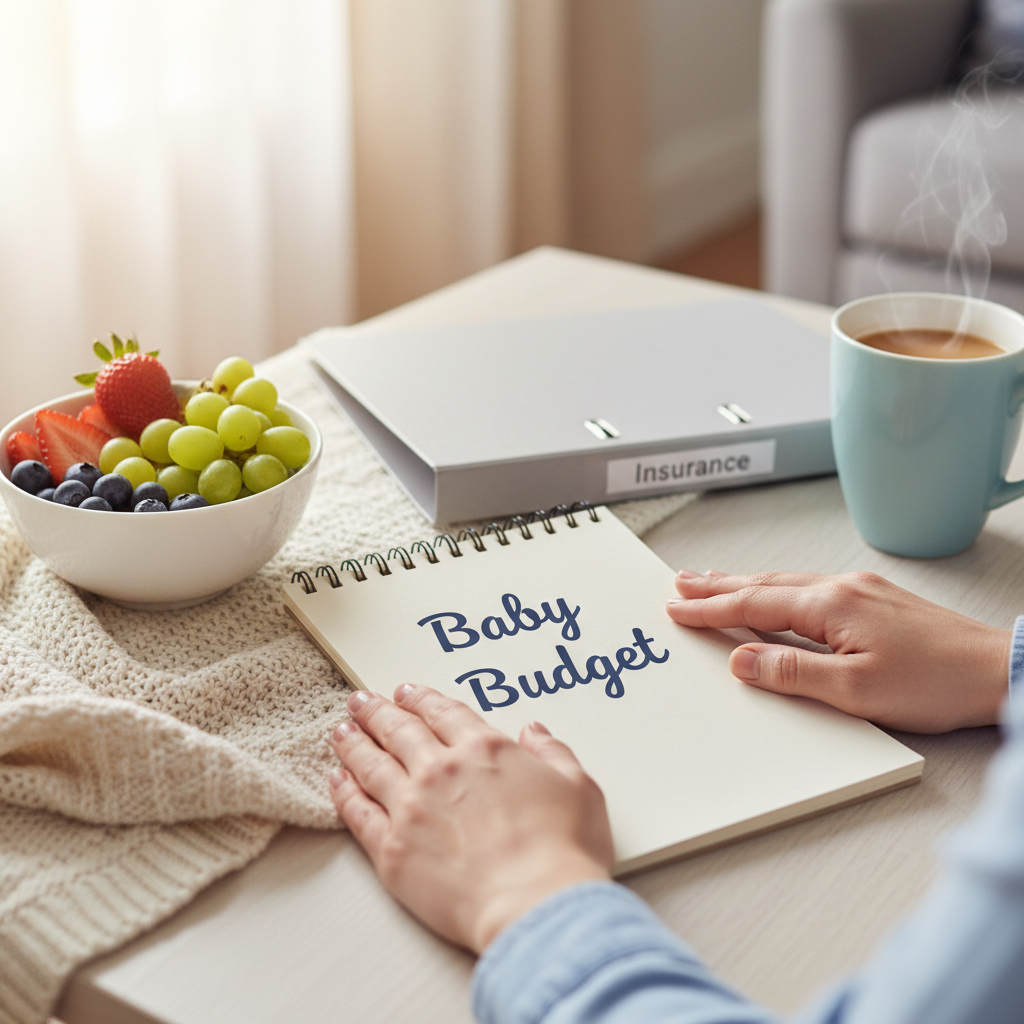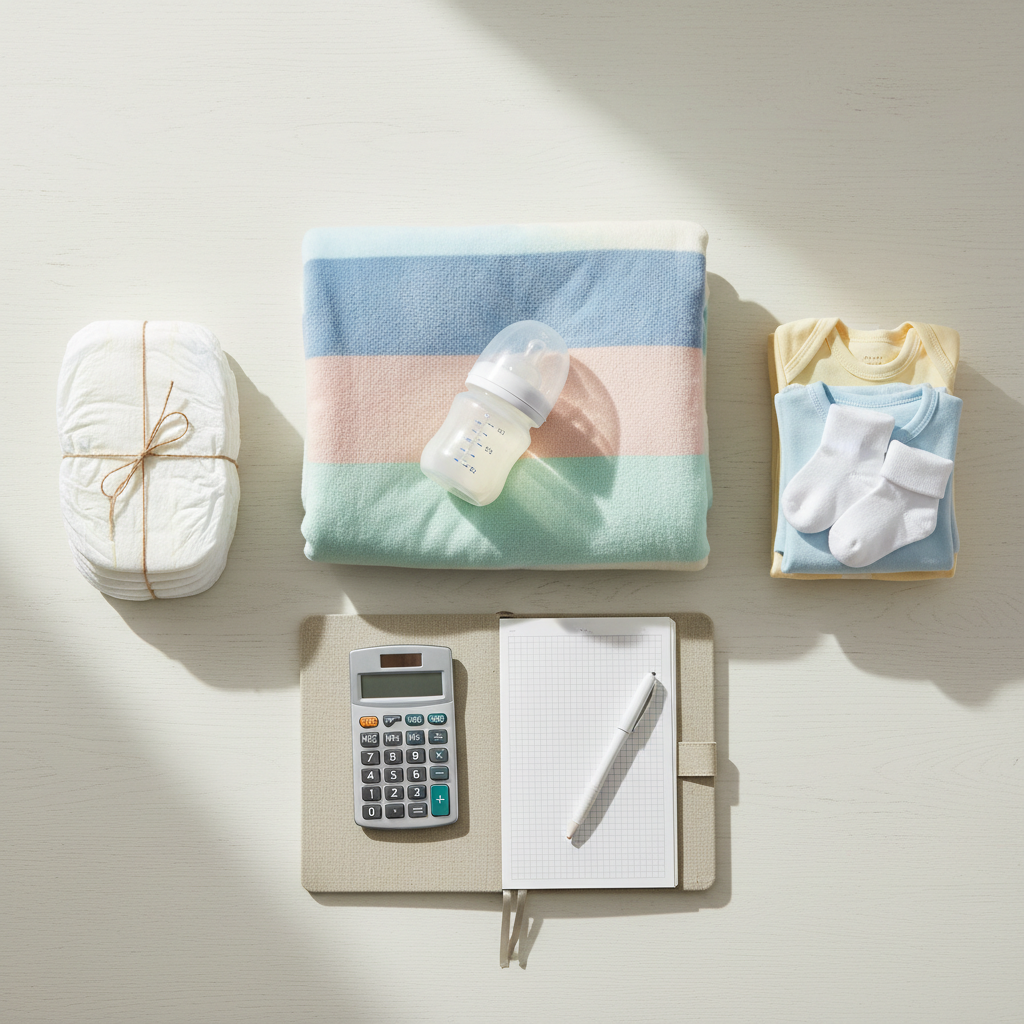
Budgeting for Baby’s First Year: Financial Planning During Pregnancy
Welcoming a baby brings immense joy along with significant financial adjustments that many expectant parents find challenging to navigate. The first year with your little one typically costs between $20,000 and $50,000, a range that reflects the many personal choices families make about childcare, housing, and lifestyle.
Key Highlights
Here’s what to know about managing baby’s first-year expenses:
- Childcare represents the largest ongoing expense, potentially exceeding $1,000 monthly depending on your location and chosen arrangement.
- Hospital delivery costs vary widely, from $5,000 to $30,000 depending on your insurance coverage and birth circumstances.
- Essential baby gear requires upfront investment, but many items can be purchased secondhand or borrowed to reduce costs.
- Creating a dedicated baby fund during the second trimester helps smooth financial transitions.
- Health insurance adjustments should be made before baby arrives to ensure proper coverage.
Understanding Changes: Financial Realities

The financial impact of welcoming a baby extends beyond the immediate expenses of delivery and essential items. First-year costs typically range from $20,000 to $50,000, with significant variation based on your location, lifestyle choices, and available support systems. This substantial range reflects differences in childcare arrangements, healthcare needs, housing adjustments, and personal preferences regarding baby gear and supplies.
Understanding this financial reality during your 2nd trimester provides you with valuable time to prepare. Many parents report feeling caught off guard by certain expenses, particularly the ongoing costs that accumulate month after month. Breaking down these expenses into categories helps make financial planning more manageable and less overwhelming during this exciting time of preparation.
Understanding Changes: One-Time vs. Recurring Expenses
Baby expenses generally fall into two categories: one-time purchases and recurring costs. One-time investments include furniture like cribs ($200-$1,000), car seats ($80-$400), strollers ($100-$1,000), and initial clothing sets. These purchases, while substantial, represent a smaller portion of your overall baby budget compared to recurring expenses.
Ongoing costs include diapers ($70-$80 monthly), formula if not breastfeeding ($150-$200 monthly), regular clothing updates as baby grows, and childcare. According to financial experts, separating these expense types helps parents create more accurate budgets. The American Academy of Pediatrics notes that babies go through approximately 2,700 diapers in their first year alone, making this a significant recurring expense that many new parents underestimate when planning.
Your Body & Baby: Healthcare Considerations

Pregnancy and delivery costs vary widely based on your insurance coverage and any pregnancy headaches second trimester or other complications that might arise. The average hospital birth costs between $5,000 and $11,000 for a vaginal delivery and $7,500 to $30,000 for a C-section before insurance, according to the Kaiser Family Foundation. Understanding your insurance coverage early in pregnancy helps avoid unexpected bills.
Beyond delivery, your baby will need regular pediatric care including well-visits, vaccinations, and potentially other medical attention. Contact your insurance provider during your second trimester to understand how adding a dependent will affect your premium and what pediatric services are covered. Some parents find that switching to a family insurance plan or exploring options through the Children’s Health Insurance Program (CHIP) can provide better coverage at manageable costs for families with specific income levels.
Your Body & Baby: Childcare Planning
Childcare represents the largest expense for most families with infants, often surpassing housing costs in many urban areas. The Economic Policy Institute reports that infant childcare averages between $5,000 and $24,000 annually depending on location, with costs in major cities often at the higher end of this range. By the 2nd month pregnancy milestone, beginning to research childcare options gives you time to make informed decisions.
Available options include daycare centers, home-based daycare, nanny services, au pairs, or family care arrangements. Each comes with different cost structures and benefits. Some employers offer dependent care flexible spending accounts that allow you to set aside pre-tax dollars for childcare expenses. Additionally, exploring whether either parent can adjust work schedules, work remotely, or change to part-time hours might create solutions that reduce childcare costs while maintaining career trajectories. Many families find that prioritizing couple time before baby arrives provides opportunities to discuss these important decisions together.
Healthy Living Tips: Building Your Baby Budget

Creating a dedicated baby budget during pregnancy helps ensure financial stability when your little one arrives. Financial advisors recommend setting aside 3-6 months of expenses in an emergency fund before baby arrives, though even smaller savings provide valuable protection. Start by reviewing your current spending and identifying areas where you can redirect funds toward baby preparations.
Many parents find success with the “practice budget” approach during pregnancy: living as though you already have the added expenses of a child and directing the difference to savings. This not only builds your baby fund but also helps you adjust to the new financial reality gradually rather than suddenly. Consider opening a specific high-yield savings account dedicated to baby expenses, separate from other savings goals. As relationships change during the second trimester, having open financial discussions with your partner becomes increasingly important for aligned planning.
Healthy Living Tips: Smart Money-Saving Strategies
Finding balance between providing for your baby and maintaining financial health often means embracing strategic savings opportunities. Purchasing used items for short-term use (like infant clothing or certain types of gear) can reduce costs by 50-80%. Safety-critical items like car seats, however, should generally be purchased new unless you can verify the complete history of a secondhand option.
Creating a focused baby registry helps family and friends contribute meaningful gifts while avoiding duplicate items. Many parents find that accepting hand-me-downs and joining local parenting groups for item swaps significantly reduces expenses. Consider the “buy nothing” community in your area, where parents often pass along outgrown baby items at no cost. For essentials you’ll purchase new, timing your shopping around major sales (Black Friday, end-of-season clearances) can yield substantial savings. These strategies help you prepare for baby while maintaining healthy relationship dynamics without financial strain.
Preparing for Your Growing Family
Financial planning for your baby’s first year might seem overwhelming initially, but breaking it down into manageable steps makes the process more approachable. By understanding the range of potential costs, distinguishing between one-time and recurring expenses, and implementing strategic saving approaches, you can create a stable foundation for your growing family.
Remember that financial preparation is just one aspect of the journey to parenthood, and finding balance between practical planning and enjoying this special time is important. Every family’s situation is unique, and there’s no single “right way” to prepare financially. The goal isn’t perfect planning but rather creating enough stability and flexibility to welcome your baby with confidence and joy.
